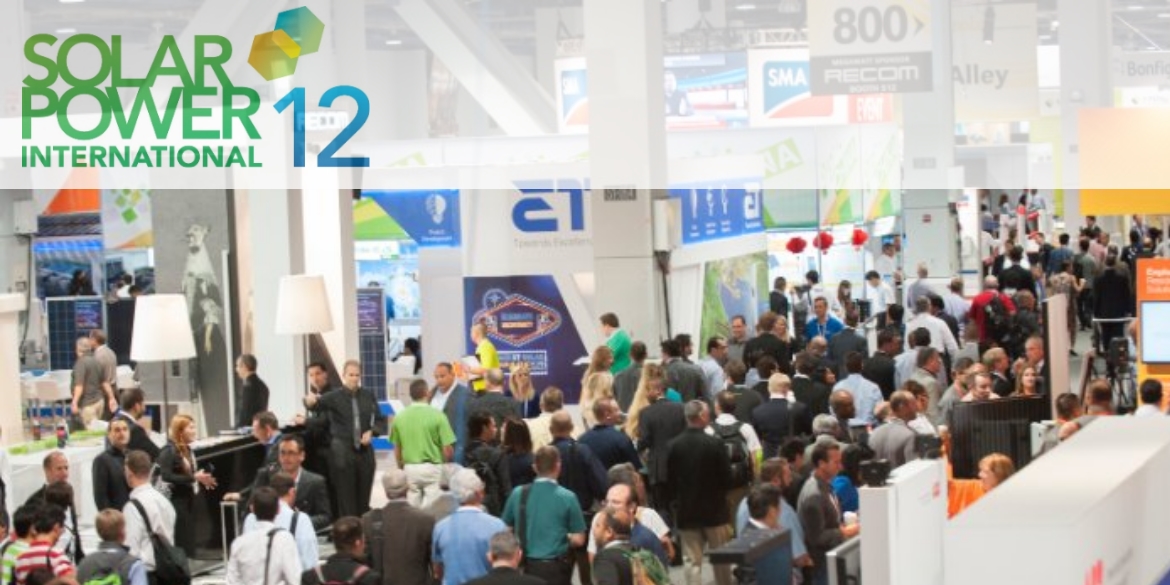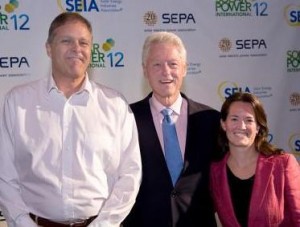The highlight of Solar Power International 2012 (SPI) was former President Bill Clinton’s keynote – proof positive that the solar industry has come of age. Many of us remember the small solar tradeshows of yesteryear with a few dozen booths and a few hundred attendees. Congratulations to SEPA and SEIA, Julia Hamm and Rhone Resch, and the whole team that made this year’s event a resounding success.
Clinton encouraged the industry to get the word out about solar and the tremendous accomplishments that have been made in the last decade. He noted that the clean energy industry has seen growth of more than 8% per year even through the depths of the recession, with average wages that are higher than the nation as a whole. He added that this growth is in spite of “$22 in subsidies to oil, coal and nuclear power for every $1 invested in renewable energy.” Clinton called for a “multi-partisan” approach where we favor “arithmetic over ideology.”
Beyond the excitement of Clinton’s keynote speech, the activity level was high on the tradeshow floor and in conference proceedings. We heard discussion around three primary themes:
- Net Metering: With the utilities taking a closer look at net metering, there was talk of preparing for a world of production metering for distributed solar systems. Julia Hamm, president of SEPA, touched on this during her opening remarks. The solar industry has pointed out the many benefits of distributed solar, from fuel price hedging to transmission and distribution upgrade deferral, while the utilities have focused on the fact that solar cannot be dispatched. Recent work developing a Value of Solar™ tariff for Austin Energy helped quantify the issue. You can read more about Austin Energy’s Value of Solar tariff in the paper “Designing Austin Energy’s Solar Tariff Using a Distributed PV Calculator.”
- Grid Integration: Grid integration of intermittent renewables, both distributed and centralized, was another hot topic at SPI. One day this June, 50% of German power came from solar. This milestone has pushed U.S. utilities to consider how they will handle high-penetration PV at a local level or system-wide. While solar is highly peak coincident, production is dependent on variable irradiance. This is a manageable problem for most utilities if they can anticipate what the systems on their network will be producing. Tom Hoff, President of Clean Power Research, moderated a well-attended session entitled Accuracy of Solar Modeling and Forecasting, which addressed this issue.
- Reducing Solar Soft Costs: In response to an industry-wide focus on reducing solar soft costs, industry veterans Barry Cinnamon, founder of Akeena Solar (now Westinghouse Solar), and Ron Kenedi, former vice president of Kyocera Solar and Sharp Solar, have teamed up with ASES on a new campaign, Solar Freedom Now. This campaign seeks to cut the installed price of solar in the U.S. in half by cutting ‘red tape’ and paperwork. This effort will involve a combination of reducing burdensome and redundant inspections and consolidating data entry online – which Clean Power Research is addressing with PowerClerk®. With module prices at record low levels, solar soft costs are now one of the largest cost components of installing a solar system.
SPI kicked off with GTM Research’s report of phenomenal growth in the U.S. solar market growth during the second quarter. Evidence of this activity, and continued growth through the end of the year, was in abundance at the show.

